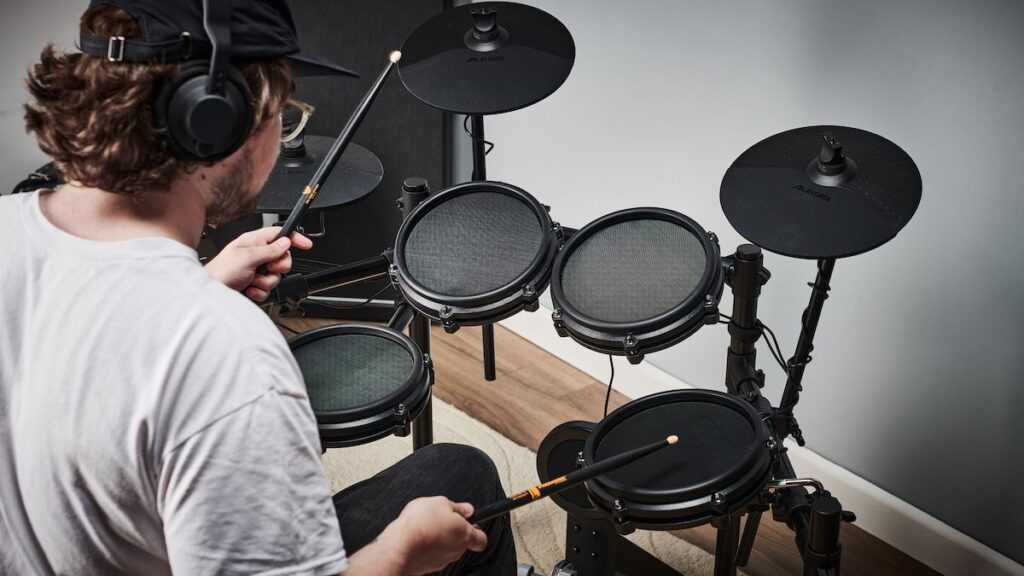How to Choose a Drum Kit
5 min read
If playing the drums has been attracting you for some time, one day, you may decide to start acting and get yourself a kit. Or get it for your kid who wants to master playing the drums. But how do you choose the perfect kit, getting the right quality but not overpaying? Well, the information on sites like simplydrum.com may help, but there are many drummers, and the only one you. How do you make a perfect choice for your needs? Let’s start with the basics and then proceed.
How Old Are You?
Or the one who’s supposed to play these drums. It is a crucial question because it defines the kit size you need. There are 2 types of kits: adult and junior ones, which differ in size but preserve the setup, so it’s easier for the young drummer to switch to the adult one when they grow big enough.
The kits for kids sold in toy stores are not to be taken seriously (unless you want to buy them as a toy). The quality of these is inferior, while junior kits by serious vendors (like Roland or Ludwig) are made quite professionally and have decent sound and sturdy build.
Where Are You Going to Play?
It’s one thing if you want to install the kit in your basement where no one hears you well enough to be annoyed. It’s different from having it in your room (especially if it’s an apartment). While in one situation, you can go for a real drum kit without any restrictions, in the other, you have to do anything to mute it down as much as possible. The physical feel should be preserved.
For this purpose, practice drum kits make much less noise while giving the same feel. Here are the differences:
- The cymbals are perforated, so the sound they make is much lower.
- The bass drum is replaced with a pedal practice pad that provides the same bouncing feel but makes little sound.
- The other drums are replaced with practice pads too.
There are also drum silencing pads with which you can cover the skins of your snare and toms to make them quieter. Or, you can buy an electronic drum set that makes very little noise but requires a pair of headphones to hear what you’re playing.
Learn or Earn?
Another difference is how you plan to use the drum kit. Are you going to put it in one place for stationary use? Or will you take it with you to various gigs or studios? It defines some features you need.
- Solid hardware. It won’t be bad anyway, but the more you have to carry it around, the more attention you should pay to its build and materials.
- Enough said.
- Spare parts. If suddenly you damage a skin, a cymbal, or a stand, you’ll need a replacement one.
And, of course, a professional drum kit costs more than an amateur set and is much more helpful if you want to play in a decent band and earn with it.
What Are You Going to Play?
It probably matters the least if you’re just a beginner and want to master the basic skills first. But still, you better listen to how all the potential options sound and choose which fits your favorite styles the best. You better start with a standard drum setup and not chase exotic options like ethnic drums or doubles. While all the drum sets have a bass drum and a snare, the rest differs like this:
- It has 3 standard-size toms along with the snare and the bass — 2 rack ones and one floor.
- It comes with 2 toms — a floor one and a rack one.
- It’s similar to jazz but may have extra toms. In addition, it’s larger.
- It’s similar to rock, but the toms are smaller and sometimes shallower.
As for cymbals and hi-hats, they stand a bit aside and may also vary, depending on your style.
Acoustic or Electronic?
Well, for many, it’s a crucial question. If you want an electronic drumkit, at least imagine what you need it for. But still, here is the situation that makes an electronic drum kit a better purchase:
- You plan to record your session and then analyze them to learn from your mistakes. Then a duo of an e-drumkit and a DAW is the ultimate solution.
- You record music and want an opportunity to doctor your drum tracks before they make it to the final mix.
- You want a portable drum kit that you can take with you anywhere, allowing for actually playing instead of dropping samples on the piano roll.
- You are extremely short of space, so you need a real tabletop setup.
- You want it quiet but more functional than the drum kits mentioned above.
An e-drum kit checks all the boxes. These are also good for online collaborations as you can send a more editable MIDI file instead of a WAV recording. Many models also come with software, so you can save on it.
But if you want some real jazz or rock’n’roll, where playing the drums feels visceral, then an acoustic kit is the way to go. This real-time response and the full force of sound will beat any electronic replacement, which is great for production but not for making the moment.
New or Used?
Buying something new always seems like a better investment. Given how drums are treated in studios and at gigs, you may expect them to be seriously damaged or tired after some time. Yet there are situations when buying a used set makes some sense.
- Somebody’s child has grown out of a junior set or lost interest. Then buying it for your children is reasonable.
- Your friend, a professional musician, has just upgraded his drum kit and is selling the old one as it doesn’t fit their needs anymore. Then you can expect it to be in good condition.
- You have decided on your dream kit, but it’s too expensive when new. And suddenly, you see a used one on Craigslist or eBay
Then, why not? Hope these recommendations are helpful, so after reading them, you make your wise choice and get the loudest — literally — bang for your buck.



